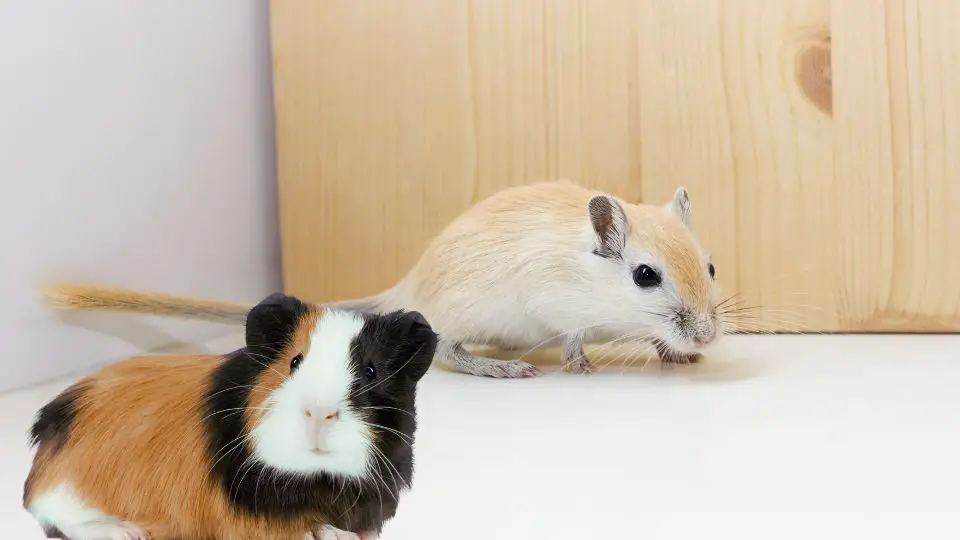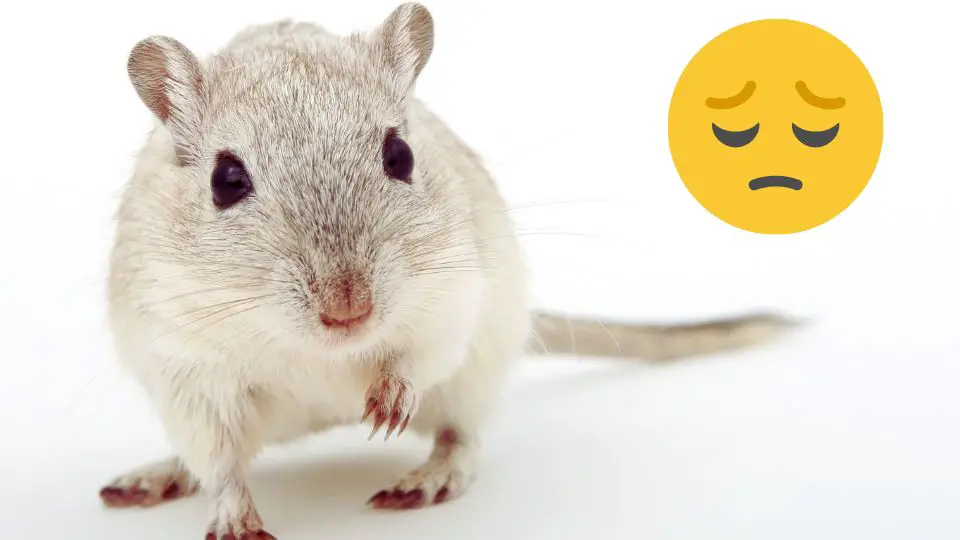Ensuring that your gerbil stays warm is crucial for their health and well-being, especially during colder months or in cooler environments.
To keep a gerbil warm, you should maintain a suitable ambient temperature and provide additional heat sources when needed.
In this article, we will explore various methods and tips on how to keep your gerbil warm and provide them with a cozy living environment.
Adjust the Ambient Temperature
Gerbils are naturally adapted to thrive in warm desert-like environments, so you have to ensure that the ambient temperature in their surroundings is suitable for their comfort and well-being. Here are some tips that we recommend for adjusting the ambient temperature to keep your gerbil warm:
- Ensure the room temperature is suitable: Gerbils are most comfortable when the ambient temperature ranges between 65-75°F (18-24°C). Keep the room temperature within this range to provide an optimal environment for your gerbil.
- Use a thermometer to monitor the temperature: Place a thermometer near the gerbil’s enclosure to accurately measure the ambient temperature. This will help you ensure that the temperature remains within the desired range.
- Use heating devices or heat mats, if necessary: If the room temperature falls below the recommended range, you can use heating devices or heat mats to provide additional warmth. Ensure that the heating devices are safe for use around small animals and do not pose any fire hazards. Place them near the gerbil’s enclosure to provide a gentle and controlled source of warmth.
Note that while gerbils require warmth, it’s equally crucial to avoid excessive heat. Gerbils are sensitive to high temperatures and can easily overheat, which can be dangerous for their health. Therefore, it’s essential to monitor the temperature carefully and make adjustments as needed.
Offer Additional Heat Sources
When providing additional heat sources for your gerbil, it’s important to choose options that are safe, suitable, and specifically designed for small animals. Here is a list of recommended additional heat sources for gerbils:
- Ceramic heat emitter: Ceramic heat emitters are a popular choice for providing supplemental heat. They emit infrared heat without producing light, making them suitable for nighttime use. Make sure to use a ceramic heat emitter designed for small animals and follow the manufacturer’s instructions for installation and usage.
- Heat pad or mat: Heat pads or mats designed for small animals can provide gentle warmth. These products are usually placed underneath a portion of the enclosure to create a warm area for your gerbil. Ensure that the heat pad or mat has a built-in thermostat to prevent overheating and follow the manufacturer’s guidelines.
- Heat rock: Heat rocks are specially designed to provide a warm surface for small animals. They can be placed in the gerbil’s enclosure to create a cozy spot for them to rest and seek warmth. It’s important to choose a heat rock that is safe for small animals, as some products can become too hot and pose a burn risk.
- Heating cables or ropes: Heating cables or ropes are flexible and can be wrapped around or placed inside the enclosure to provide localized warmth. These products distribute heat evenly and allow your gerbil to choose the desired temperature by moving closer or further away.
Here are some tips for offering additional heat sources:
- Choose a safe and appropriate heat source: Select a heat source that is designed for small animals and is safe for use in their enclosure. Ceramic heat emitters and heat pads are commonly used for providing supplemental heat. Ensure that the heat source does not emit light or pose any fire hazards.
- Place the heat source in a corner of the enclosure: Position the heat source in one corner of the gerbil’s enclosure. This allows the gerbil to choose whether to move closer to or away from the heat source, depending on their preference and comfort level. Make sure the heat source is securely installed and cannot be accessed or chewed on by the gerbil.
- Avoid direct contact with the gerbil: It’s important to keep the heat source away from direct contact with the gerbil to prevent any accidental burns or injuries. Ensure that there is a safe distance between the heat source and the gerbil, and that they have enough space to move away if they feel too warm.
- Monitor the temperature and behavior: Regularly check the temperature inside the enclosure using a thermometer to ensure it remains within the appropriate range. Monitor your gerbil’s behavior for signs of discomfort or overheating, such as excessive panting or seeking cool areas of the enclosure. Adjust the position or intensity of the heat source accordingly to maintain a comfortable and safe environment for your gerbil.
Remember that while providing additional heat sources is important, it’s equally crucial to maintain a balance and avoid excessive heat. Gerbils are sensitive to high temperatures and can easily become overheated, which can be detrimental to their health. Always prioritize their well-being and safety by monitoring the temperature and ensuring they have access to cooler areas if needed.
Use Warm Bedding and Nesting Material
Gerbils love to burrow and create nests, so providing them with soft and warm bedding materials is crucial for their comfort. Here are some options to consider:
- Fleece bedding: Fleece bedding is a popular choice for gerbils as it is soft, cozy, and provides excellent insulation. It helps retain heat and keeps your gerbil warm during colder temperatures. Ensure the fleece bedding is clean, non-toxic, and free from loose threads that can pose a risk of entanglement.
- Shredded paper bedding: Shredded paper, such as plain white paper or unprinted newspaper, can be an affordable and effective bedding option. It provides insulation and allows your gerbil to burrow and create tunnels for extra warmth. Avoid using glossy or colored papers as they may contain harmful chemicals.
- Aspen shavings: Aspen shavings are another suitable bedding material for gerbils. They are soft, absorbent, and provide good insulation. Make sure to choose aspen shavings specifically designed for small animals and avoid cedar or pine shavings, as they can be harmful to gerbils.
In addition to bedding, offering extra nesting material allows your gerbil to build a warm and cozy nest. Here are some nesting material options:
- Tissue paper or unscented toilet paper: Tear small pieces of tissue paper or unscented toilet paper and place them in the enclosure. Your gerbil will use these materials to create a soft and warm nest.
- Hay or dried grass: Provide a small amount of hay or dried grass as nesting material. Gerbils enjoy arranging the strands into a cozy nest. Ensure the hay is free from dust, mold, or sharp objects that can harm your gerbil.
- Shredded paper strips: Shredded paper strips, such as those from plain white paper or paper towel rolls, can be offered as nesting material. Your gerbil will use these strips to build their nest and add extra insulation.
Regularly Maintain and Inspect the Enclosure
Regularly inspect the enclosure for any drafts or damage that may compromise insulation and pose a risk to your gerbil’s well-being. Here are some key areas to check:
Cage structure
Examine the cage for any loose or broken bars, gaps, or sharp edges. Repair or replace any damaged parts to ensure the enclosure is secure and safe.
Ventilation
Check the ventilation system to ensure proper airflow without drafts. Make sure the enclosure is not placed near windows, doors, or vents where sudden temperature changes or drafts may occur.
Bedding quality
Assess the condition of the bedding material. Remove any wet or soiled bedding promptly to prevent moisture buildup, which can lead to mold or bacterial growth.
Chewed or worn-out items
Inspect toys, hides, and other accessories for any signs of chewing or excessive wear. Replace damaged items to prevent injury to your gerbil and ensure a stimulating environment.
Conclusion
Keeping your gerbil warm is essential for their overall well-being. By adjusting the ambient temperature, offering additional heat sources, providing warm bedding and nesting material, and regularly maintaining and inspecting the enclosure, you can create a comfortable and cozy habitat for your gerbil.
Remember to monitor the temperature, ensure safety, and be attentive to your gerbil’s behavior to ensure they are maintaining a suitable body temperature. With these measures in place, you can help your gerbil stay warm and content, promoting their health and happiness throughout the year.







